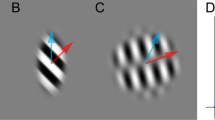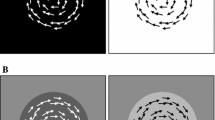Abstract
Day-old chicks were exposed to point-light animation sequences depicting either a walking hen or a rotating cylinder. On a subsequent free-choice test (experiment 1) the chicks approached the novel stimulus, irrespective of this being the hen or the cylinder. In order to obtain equivalent local motion vectors, in experiments 2 and 3 newly hatched chicks were exposed either to a point-light animation sequence depicting a walking hen, or to a positionally scrambled walking hen (i.e. an animation in which exactly the same set of dots in motion as that employed for the walking hen was presented, but with spatially randomized starting positions). Chicks tested on day 1 (experiment 2) or on day 2 (i.e. after a period in the dark following exposure on day 1 (experiment 3)) proved able to discriminate the two animation sequences: males preferentially approached the novel stimulus, females the familiar one. These results indicate that discrimination was not based on local motion vectors, but rather on the temporally integrated motion sequence.
Similar content being viewed by others
Author information
Authors and Affiliations
Additional information
Received: 18 August 1999 / Accepted after revision: 14 March 2000
Rights and permissions
About this article
Cite this article
Regolin, L., Tommasi, L. & Vallortigara, G. Visual perception of biological motion in newly hatched chicks as revealed by an imprinting procedure. Anim Cogn 3, 53–60 (2000). https://doi.org/10.1007/s100710050050
Issue Date:
DOI: https://doi.org/10.1007/s100710050050




